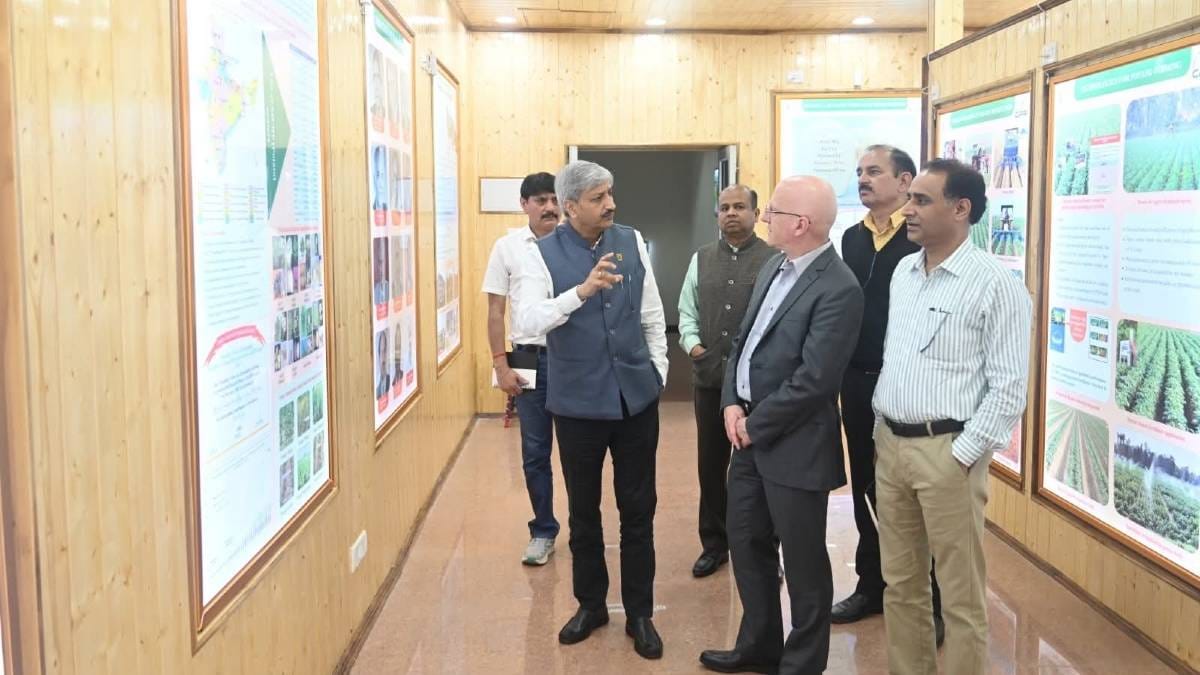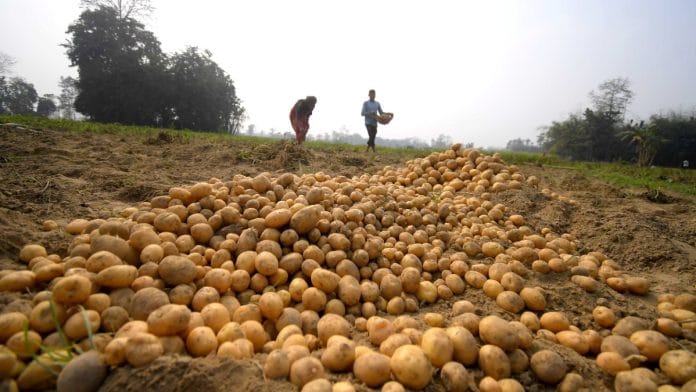New Delhi: A new variety of iron-rich, biofortified potato developed by Peru’s International Potato Center (CIP) is set to hit the Indian market “soon”.
Speaking to ThePrint, Simon Heck, director-general of CIP, who is in India for the establishment of CIP’s South Asia regional centre in Agra, said the germplasm or genetic material for the biofortified potato variety has been handed over to the Indian Council of Agricultural Research’s (ICAR) Central Potato Research Institute in Shimla.
The germplasm, carrying the entire genetic material of the crop, including all its hereditary information, will be key to developing the iron-rich potato variety for commercial use.
“We had developed this variety to meet iron deficiency in Peru. The reception there is already great,” Heck said.

ICAR scientists are working on CIP’s germplasm to develop it for Indian conditions.
Senior officials from ICAR told ThePrint that once the variety is developed to suit Indian soil and environmental conditions, it will be distributed and tested for efficacy in a limited geographical area. “We will test the first batch with some farmers and then release it for wider commercial use,” an ICAR official said.
The new iron-rich variety is expected to catch on, considering that India’s potato production is at record highs and prevalence of anaemia is a concern for the government.
Trilochan Mohapatra, a renowned Indian geneticist and former director-general of ICAR, told ThePrint that India is fighting severe malnutrition and undernutrition, and biofortified crops are the way to solve these deficiencies. “India is investing heavily in experiments around biofortified crops. Our own institutes have developed nearly 100 biofortified varieties of various crops,” he said.
The biofortified potato
Biofortification is the practice of breeding crops to increase their nutritional value, either through conventional selective breeding or through genetic engineering.
CIP’s work on developing iron and zinc-fortified potatoes has been going on for the last 16 years. The institute’s first batch of biofortified potatoes was found to have 40-80 percent higher concentrations of iron when compared to other commonly consumed varieties in Latin American highlands, according to its website.
The work did not stop there. For the second set, CIP scientists combined the traits from the first set and an elite variety also developed by the institute. These varieties combined elevated iron and zinc concentrations, including traits such as resistance to late blight (potato fungus) and virus diseases, while also increasing the crop’s tolerance to heat and drought.
“In 2018, 30 clones of the second set and three commercial varieties, used as controls, were planted in seven field sites scattered across Peru for participatory selection with farmers. At least 50 clones from the second set have also been sent to partners in Africa and Asia as in vitro plantlets for field adaptation and evaluation there,” CIP said in a statement.
CIP’s biofortified crops are no stranger to the Indian market. Its sweet potato variety, with increased absorption capacity for Vitamin A, is already being grown extensively by farmers in Odisha, Karnataka, West Bengal and Karnataka.
Fortified potatoes are expected to go a long way in tackling anaemia, which affects nearly 57 percent of Indian women aged 15-49, according to India’s National Family Health Survey (2019-2021).
Government estimates show that the prevalence is only expected to increase in the coming years with increased population, unless there is a focused improvement of micronutrients in food that is readily available to the masses.
A 2023 study published in The Journal of Nutrition—’Total Iron Absorbed from Iron-Biofortified Potatoes Is Higher than that from Non-biofortified Potatoes’—compared iron absorption in women who had meals prepared from iron biofortified potatoes with those who consumed non-biofortified varieties.
The trial was conducted among women from the Peruvian highlands.
It found that the total iron absorption from iron biofortified potato varieties was 45.8 percent higher than that from non-biofortified commercial potato varieties.
(Edited by Nida Fatima Siddiqui)
Also Read: Gujarat is the hub of India’s potato revolution. Feeding the world frozen fries






